This pub is closed permanently. Your nearest Wetherspoon pub: The Joseph Bramah, Barnsley
Many of the members of the Barnsley British Co-operative Society were associated with the coal trade. By the turn of the 20th century, ‘coal was king’ in Barnsley – the capital of the South Yorkshire coalfield. The rich Silkstone seam was worked at several pits in the area, which had ‘Silkstone’ as part of their name.
Photographs and text about The Silkstone Inn.
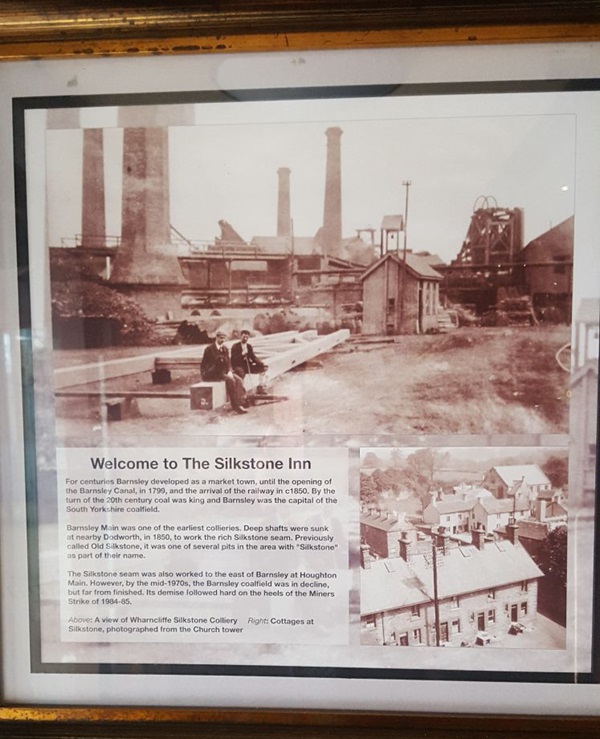
The text reads: For centuries Barnsley developed as a market town, until the opening of the Barnsley Canal, in 1799, and the arrival of the railway in c1850. By the turn of the 20th century coal was king and Barnsley was the capital of the South Yorkshire coalfield.
Barnsley Main was one of the earliest collieries. Deep shafts were sunk at nearby Dodworth, in 1850, to work the rich Silkstone seam. Previously called Old Silkstone, it was one of several pits in the area with Silkstone as part of their name.
The Silkstone seam was also worked to the east of Barnsley at Houghton Main. However, by the mid-1970s, the Barnsley coalfield was in decline, but far from finished. Its demise followed hard on the heels of the Miners’ Strike of 1984-85.
Above: A view of Wharncliffe Silkstone Colliery
Right: Cottages at Silkstone, photographed from the Church tower.
Photographs of Wharncliffe Silkstone Colliery.

Above: Wharncliffe Silkstone Colliery, 1896
Below: A commemoration of the eleven killed in an explosion at Wharncliffe Silkstone Colliery on May 20 1914.
Photographs and text about Joseph Locke.

The text reads: Born near Sheffield in 1805, Joseph Locke moved to Barnsley when he was five. His family lived in a house behind Shambles Street on Coal Pit Hill. After leaving school at 13, and trying various jobs, he became apprentice to the great railway engineer George Stephenson in 1823 and formed a lifelong friendship with his son, Robert. At the heart of Victorian construction and expansion, Locke, Robert Stephenson and Brunel were the world’s most prominent engineers in the 19th century. Joseph Locke made an essential contribution to the creation of the national railway network we have today. He became an MP, and President of the Institute of Civil Engineers. His wife Phoebe the daughter of poet John McCreery, gave Locke Park to the people of Barnsley after her husband’s sudden death in 1860, aged 55.
Above: The Fountain and Serpentine, Locke Park, c1915
Left: Joseph Locke.
Two old photographs of Barnsley.
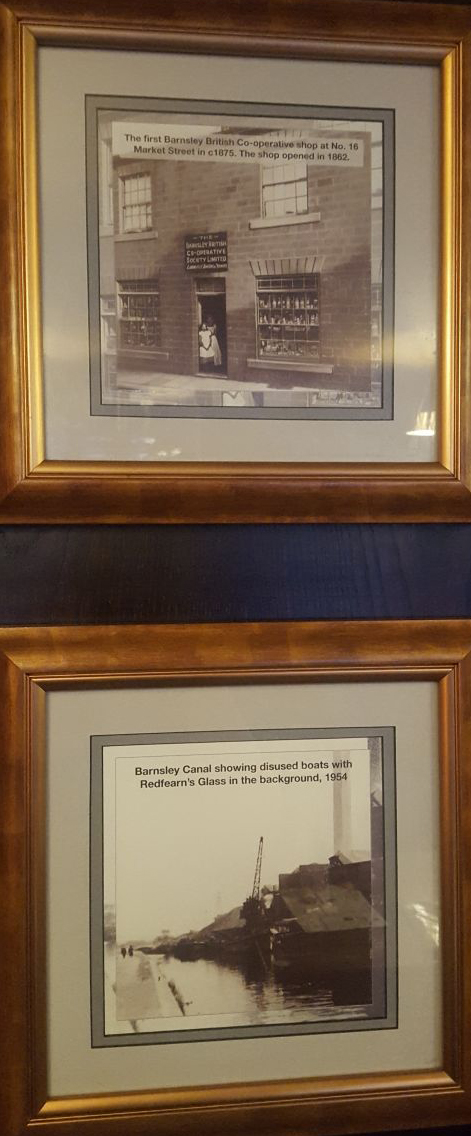
Above: The first Barnsley British Co-operative shop at No. 16 Market Street in c1875. The shop opened in 1862
Below: Barnsley Canal showing disused boats with Redfearn’s Glass in the background, 1954.
A photograph of Horse Parade on Market Street, Penistone, 1900.

This was held on the second Tuesday in April each year.
Photographs and text about the Barnsley British Co-operative Society.
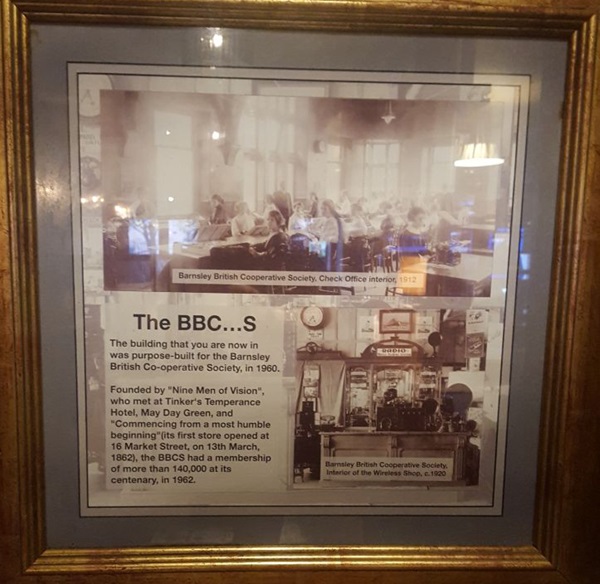
The text reads: The building you are now in was purpose built for the Barnsley British Co-operative Society, in 1960.
Founded by Nine Men of Vision, who met at Tinkers Temperance Hotel, May Day Green, and “Commencing from a most humble beginning” (its first store opened at 16 Market Street, on 13 March, 1862), the BBCS had a membership of more than 140,000 at its centenary, in 1962.
Photographs and text about Monk Bretton Priory.
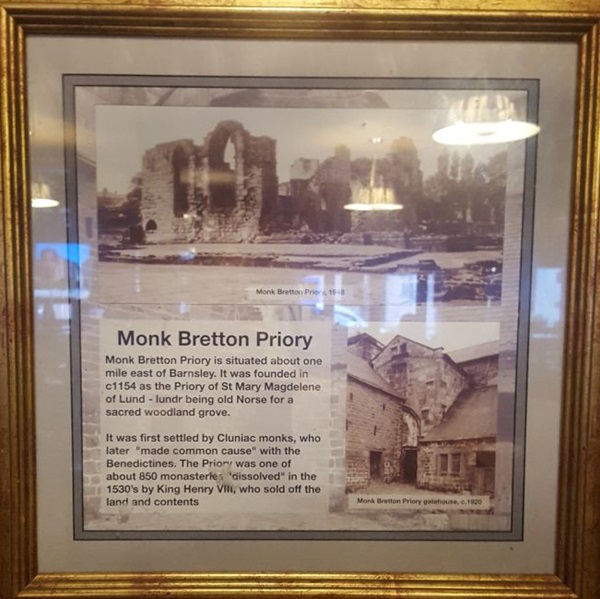
The text reads: Monk Bretton Priory is situated about one mile east of Barnsley. It was founded in c1154 as the Priory of St Mary Magdalene of Lund – lundr being old Norse for a sacred woodland grove.
It was first settled by Cluniac monks, who later “made common cause” with the Benedictines. The Priory was one of about 850 monasteries dissolved in the 1530s by King Henry VIII, who sold off the land and contents.
Photographs and text about 64 Market Street.
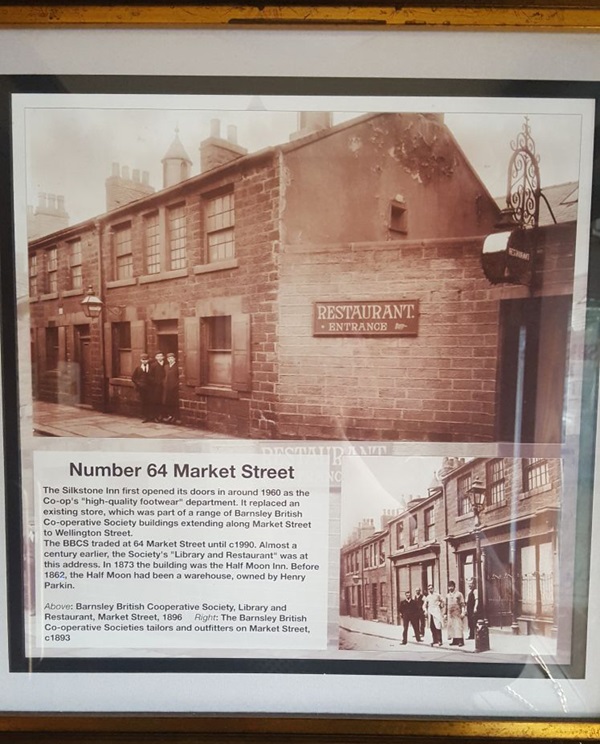
The text reads: The Silkstone Inn first opened its doors in around 1960 as the Co-op’s “high-quality footwear” department. It replaced an existing store, which was part of a range of Barnsley British Co-operative Society buildings extending along Market Street to Wellington Street.
The BBCS traded at 64 Market Street until c1990. Almost a century earlier, the Society’s library and restaurant was at this address. In 1873 the building was the Half Moon Inn. Before 1862, the Half Moon had been a warehouse, owned by Henry Parkin.
Above: Barnsley British Cooperative Society, library and restaurant, Market Street, 1896
Right: The Barnsley British Co-operative Societies tailors and outfitters on Market Street, c1893.
A sculpture entitled Mining the Silk Seam.

Andrew Kay-Yorkshire sculpture graduate. Inspired by the surface winding gear of the colliery.
External photograph of the building – main entrance.
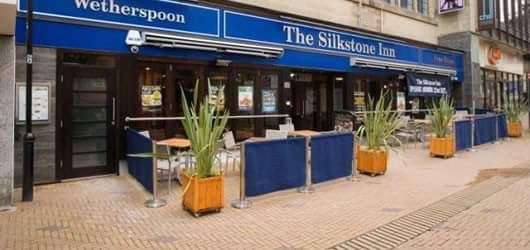
If you have information on the history of this pub, then we’d like you to share it with us. Please e-mail all information to: pubhistories@jdwetherspoon.co.uk